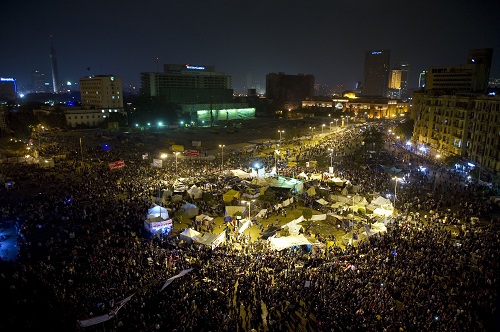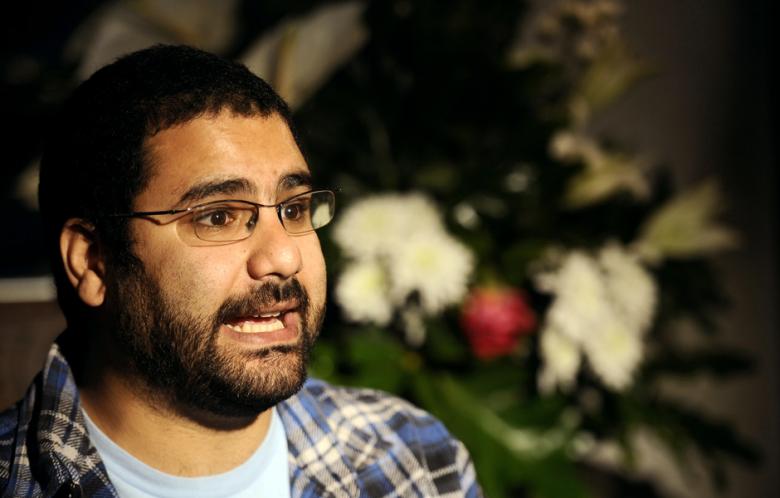
T he Egyptian revolution is a fight for many things. It is a fight for justice, a fight for freedom and a fight for the fallen. All worthy ideals, the pursuit of which is mirrored in other historic revolutions. Often overlooked, however, is the fight for livelihood. No-one seems to deny that the revolution had to happen, but as the chaos snowballed the economy suffered, many people lost their jobs and businesses teetered on the brink of bankruptcy. It became apparent that, while the spirit of the revolution did not die out, the average Egyptian could not become a full time Guevara or Robespierre.
Thus, with this in mind, a solution was found: part-time protesting. The uprising has evolved into an after-hours revolution. The statement is not intended to be disparaging nor is it meant to belittle the efforts of those who ended a dark period of repression. It simply means that unlike other revolutionaries of their kind, such as the Cubans under Castro or the Third Estate that led to the formation of the French Republic – revolutionaries with whom the Egyptians are certainly on par – the Egyptians do not have the luxury of turning into full-time revolutionaries.
Egyptians have managed to bring down a deeply-ingrained autocratic regime and set up what is proving to be a relatively close democratic presidential election, all in the hours people normally watch television before going to bed. Workers by day, fighters of injustice by night; the protesters are truly the collective Batman of the revolutionary world.
“I went to march one day with my mother and my sister, from Mohammed Mahmoud street to Tahrir Square, but when we arrived there were too many people; we could not get in!” exclaims Rana Hussein, a self confessed part-time protester. “So we decided to go for a nice lunch at the Intercontinental Hotel, take a short rest and join the protest once we could enter Tahrir.” Rana and her family were happy, but not at all surprised to see that the Intercontinental dining room was packed with many other protesters. “They were wearing scarves, sneakers and they were all holding flags,” Rana says, “it was interesting to see that a normal thing like a family lunch was slotted in between marching and protesting.” A modern twist to a time-old Egyptian tradition.
Incredible as the concept may be, the fact remains it was borne out of necessity, and not a desire to galvanize or impress. While the revolution has drawn support from every social stratum imaginable, the spark that lit the fire is a core group of young students and activists who remain the backbone of the revolution. They manifest themselves as entities such the April 6 Youth Movement or simply as individuals that show up when the sun sets, ready to fight dictatorship until a decent hour, because responsibility dictates they get a good night’s sleep before attending university or showing up to work in the morning. Many of these students are approaching marriage age, when expenses such as apartments and honeymoons add up and work cannot afford to be missed. Others are trying to excel at university and create a better future for themselves. They realize that, after the revolution is done and their goals have hopefully been achieved, life will go on and those without purpose or support will be left behind.
Another reason Egyptian protesters have managed to retain their normal lives in addition to the full brunt of the revolution is the nonviolent nature of the protests. Since the very beginning, the slogan of the protests has been “Selmeya, selmeya” or “peaceful, peaceful”. There has been no need for secret meeting places, or to hide from roving government death squads. This, in turn, has led to an air of relative relaxation, with protesters being able to organize neat schedules, where regular work and political activism do not clash. That does not mean there has been any shortage of violence, as is bound to happen when groups of millions congregate, but it goes against the founding nature of the Egyptian revolution.
This dual life has also been reflected in the way the revolution has been organized. For instance, the marches that took place throughout this past week were all strategically timed. Weekday marches are set for five in the evening; while the big daytime events are reserved for Friday, the traditional protest day that is the Egyptian equivalent of Saturday- a day of rest and no work. “We choose these days because it is when people leave work, so it is convenient,” said Tarek Al Khouly, official spokesperson of the April 6th Youth Movement, “And the sun is not so hot, so more people will come.”
While some would argue this belies an inherent laziness or lack of dedication to the cause, the Egyptian revolution has proven to be true to its word. Mubarak is jailed and conceivably democratic elections are well underway. The initial ambitions of the revolution have almost come to fruition and the majority of the population did not have to miss a day of work to achieve them, despite rallying almost daily in Tahrir Square. What better outcome could there possibly be?




